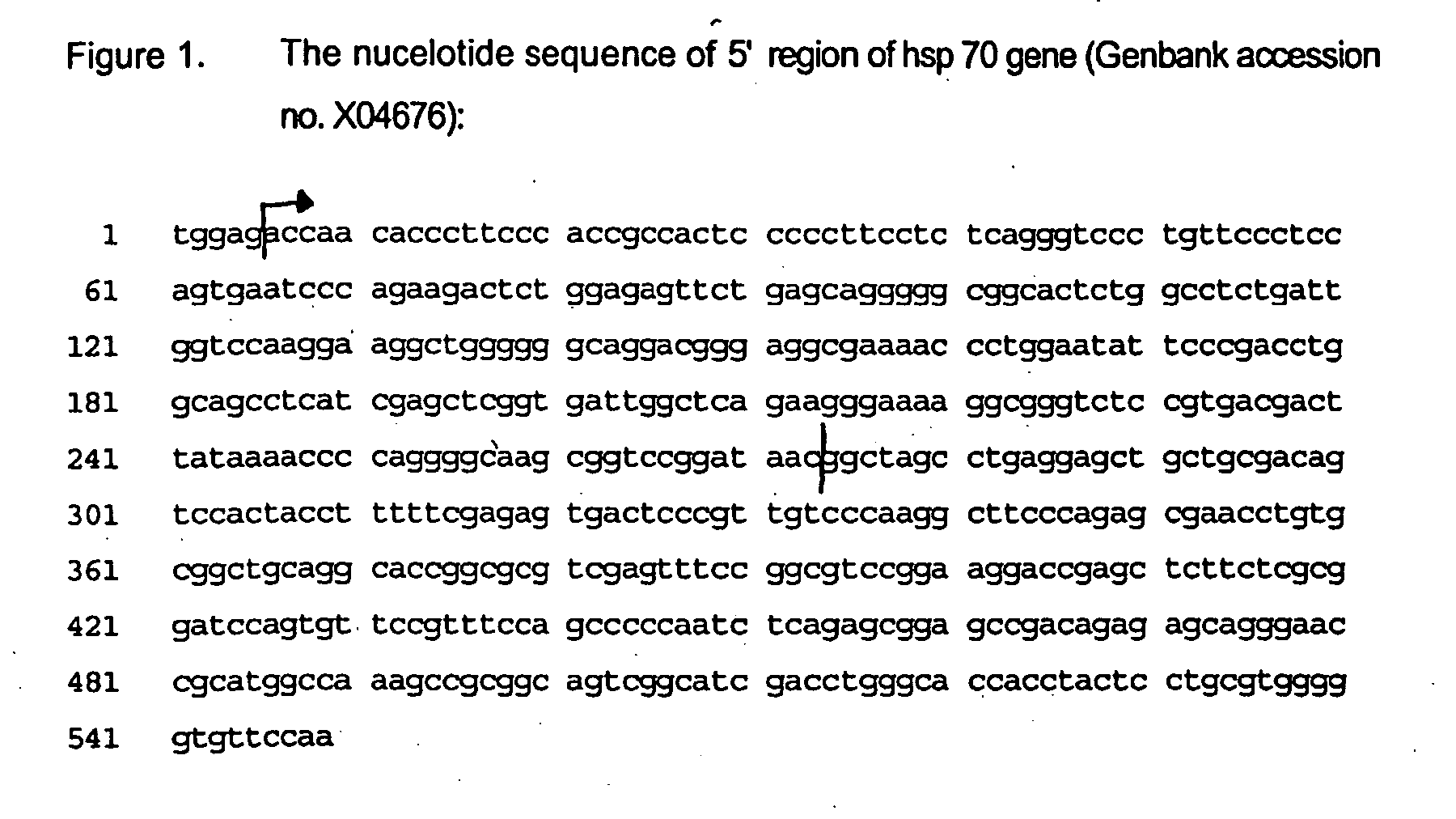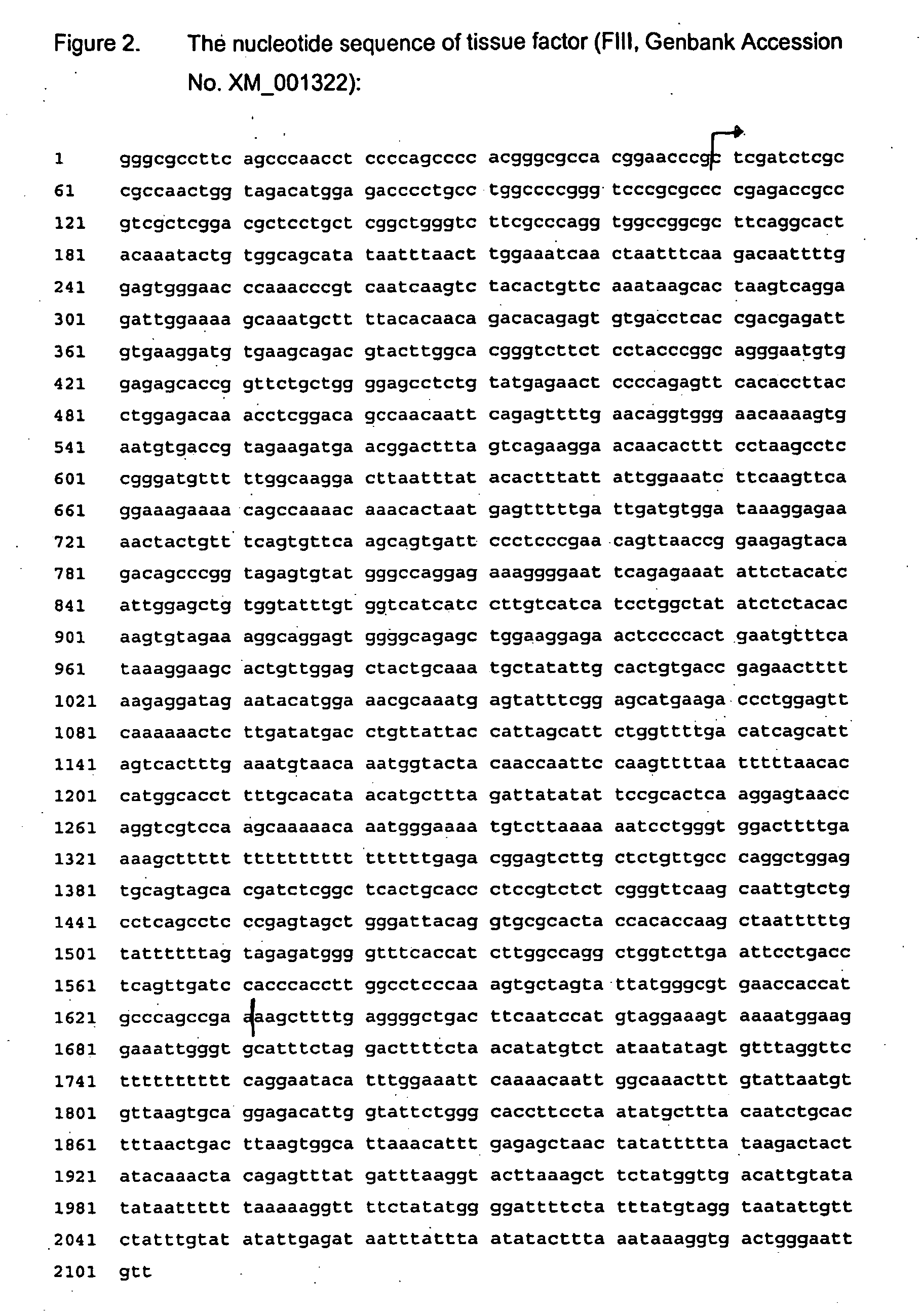Stem cell-derived endothelial cells modified to disrupt tumor angiogenesis
an endothelial cell and tumor angiogenesis technology, applied in the direction of biocide, genetic material ingredients, animal repellents, etc., can solve the problems of affecting tumor growth, affecting tumor growth, and affecting tumor growth, and requiring frequent (often daily) dosing
- Summary
- Abstract
- Description
- Claims
- Application Information
AI Technical Summary
Benefits of technology
Problems solved by technology
Method used
Image
Examples
example 1
Transplantation and Engrafting of Genetically Modified Endothelial Cells Bovine Model
[0048] Primary cultures of bovine fibroblasts are prepared from skin and lung tissue and are grown in vitro using known methods. Such methods are described, for example, in U.S. Pat. No. 6,011,197 (Strelchenko et al.), and in U.S. Pat. No. 5,945,577 (Stice et al.), the contents of both of which are incorporated herein by reference in their entirety.
Fibroblast Isolation
[0049] A general procedure for isolating fibroblast cells is as follows: Minced issue is incubated overnight at 10.degree. C. in trypsin EDTA solution (0.05% btypsin / 0.02% EDTA; GIBCO, Grand Island, N.Y.). The following day tissue and any disassociated cells are incubated for one hour at 37.degree.C. in prewarmed trypsin EDTA solution (0.05% trypsin / 0.02% EDTA; GIBCO, Grand Island, N.Y.) and processed through three consecutive washes and trypsin incubations (one hr). Fibroblast cells are plated in issue culture dishes and cultured ...
example 2
Transplantation and Engrafting of Genetically Modified Endothelial Cells-Murine Model
[0062] Methods for cloning mice by somatic cell nuclear transfer are known (see Wakayama et al., 1998, “Full-term development of mice from enucleated oocytes injected with cumulus cell nuclei,” Nature 394:369-374, the contents of which are incorporated herein by reference in their entirety). Methods are also known for culturing murine blastocysts produced nuclear transfer to generate an isogenic embryonic stem cell line, for genetically modifying the NT-derived ES cells by homologous recombination, and for inducing the genetically modified ES cells to differentiate in vitro to form hematopoietic precursors that can be therapeutically engrafted into mice in need of the transplant (see Rideout, 3rd, et al., “Correction of a genetic defect by nuclear transplantation and combined cell and gene therapy,” 2002, Cell, 109(1):17-27; the contents of which are incorporated herein by reference in their entire...
example 3
Inhibition of Tumors with Endothelial Cells Containing a Construct Directing Heat-Inducible Expression of Human FIII
[0073] Porcine somatic cells are isolated, cultured in vitro, and genetically modified using known methods, as described, for example, in co-owned and co-assigned U.S. Pat. No. 6,235,969 (Stice et al.).
[0074] A recombinant expression vector is prepared that comprises a gene encoding human tissue factor (FIII) under control of the heat-inducible hsp-70 promoter, and further comprises a Neor gene conferring neomycin resistance under control of a CMV promoter.
Construction of an Expression Construct Containing the Heat-Inducible hsp-70 Promoter Linked to a DNA Sequence Encoding Human FIII:
[0075] (i) The nucleotide sequence of the 5′ promoter region of the hsp 70 gene is shown in FIG. 1 (Genbank accession no. X04676) (SEQ ID NO: 1). PCR primers for cloning a 268 base fragment corresponding to bases 6 to 273 shown in FIG. 1 and containing the functional heat-inducible h...
PUM
| Property | Measurement | Unit |
|---|---|---|
| Mass | aaaaa | aaaaa |
| Sensitivity | aaaaa | aaaaa |
Abstract
Description
Claims
Application Information
 Login to View More
Login to View More - R&D
- Intellectual Property
- Life Sciences
- Materials
- Tech Scout
- Unparalleled Data Quality
- Higher Quality Content
- 60% Fewer Hallucinations
Browse by: Latest US Patents, China's latest patents, Technical Efficacy Thesaurus, Application Domain, Technology Topic, Popular Technical Reports.
© 2025 PatSnap. All rights reserved.Legal|Privacy policy|Modern Slavery Act Transparency Statement|Sitemap|About US| Contact US: help@patsnap.com


